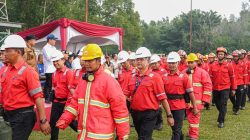Substance Use in the Workplace: A Growing Concern
Recent research from Ohio State University has revealed that nearly one in ten U.S. employees in their thirties uses alcohol or drugs while at work. This alarming trend highlights a growing issue within certain industries, particularly those involving physical labor and safety-sensitive roles.
High-Risk Industries
The study found that the risk of substance use is especially high among workers in food preparation and service, as well as construction. These findings extend to other safety-sensitive occupations such as installation, maintenance, repair, transportation, and material movement. Sehun Oh, an associate professor of social work, emphasized the concern surrounding these sectors. He pointed out that even in federal-level transportation roles, where policies typically prohibit operating under the influence, 6% of material moving workers were still reported to be working under the influence, with 2% using marijuana.
This situation is particularly troubling because it is difficult to implement interventions for workers who are constantly on the move. The lack of consistent monitoring and support makes it challenging to address substance use effectively in these roles.
Link Between Workplace and Off-Duty Substance Use
Previous studies have indicated that substance use is more common among individuals who work long hours, evening shifts, or earn low wages. However, the new analysis shows a strong connection between substance use at work and misuse outside of work. For instance, employees who used marijuana on the job were more likely to report daily use and were over twice as likely to be heavy drinkers compared to those who did not use marijuana at work.
Similarly, workers who used cocaine or other hard drugs while on the job were more likely to drink heavily, use marijuana more frequently, and report regular illicit drug use. This suggests a pattern of dependency that extends beyond the workplace and affects personal health and well-being.
Structural Support Needed
Oh noted that many workers facing adverse conditions often turn to substances as a coping mechanism. These conditions can include emotional stress, physical demands, and broader life challenges. He stressed the need for structural support to address these issues and reduce the stigma associated with substance use.
Methodology and Key Findings
To reach these conclusions, researchers analyzed data from over 5,400 employees surveyed since 1997, when they were aged between 12 and 17 years old. The surveys, conducted by Ohio State University’s Center for Human Resource Research, concluded in 2022. The most recent data used for this study came from surveys conducted between 2015 and 2016.
During this period, participants reported substance use immediately before or during a work shift over the past month. Among respondents, 8.9% of workers reported substance use in the workplace. Of these, 5.6% said they drank alcohol, 3.1% reported using marijuana, and 0.8% said they took cocaine or other hard drugs.
Policy Implications
The study’s authors suggest that updated policies could help mitigate workers’ misuse of alcohol and drugs. In 2023, a study led by co-author Daejun “Aaron” Park found that 20% of survey participants reported that their workplaces had no substance use policy. It also found that comprehensive workplace policies were linked to a decrease in employee drug and alcohol use across various sectors.
Oh’s own study from the same year revealed that only half of workers in a national sample had access to support services for substance use problems. He highlighted the limited access to support for those in blue-collar or heavy manual jobs, emphasizing the need to understand working conditions and barriers rather than simply blaming individuals for substance use.
Conclusion
The research underscores the importance of addressing substance use in the workplace through supportive policies and structural changes. By focusing on the root causes and providing necessary resources, employers and policymakers can work together to create safer and healthier work environments.







